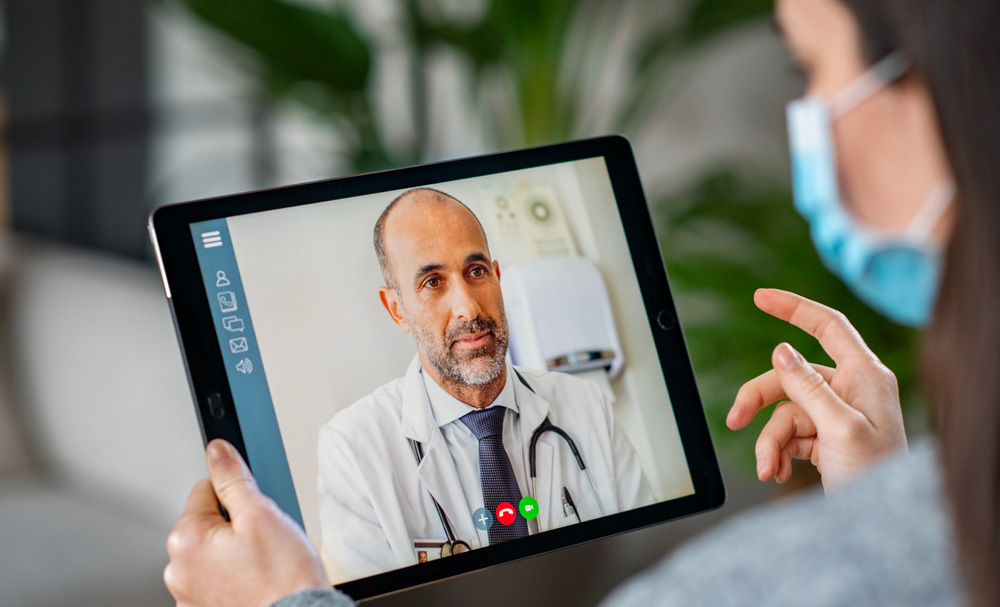Currently, telemedicine has been gaining a lot of significance due to the safety it provides to the patients as well as healthcare practitioners from the spread of COVID-19. Thus, in the year 2020, the consumer adoption of telehealth services increased from 11% to 49%. Studies have suggested that the field of telemedicine would increase significantly in the next five years. Since the field of telemedicine is growing rapidly, this blog focuses on learning the importance of its implementation as well as best practices before and after the implementing process.
Why should a hospital consider Telehealth?

The process of telehealth was developed to improve the quality of healthcare services to the patients from rural areas. It is a patient-centric methodology that has led to efficient and qualitative healthcare services. It has been reported that around 89% of patients believe that telemedicine is a sufficient form of medical care and are ready to accept it over the traditional methods. According to a study conducted on 519 patients, it was revealed that around 67% feels that Telehealth has improved their overall healthcare experience.
Is vulnerability assessment critical in development?
- Identifying the needs: In order to gain maximum value through the solution, we must first identify its actual requirement. The requirement for the implementation of telehealth could vary based on the healthcare organization. A number of healthcare organizations try to target specific patients at first and eventually try to expand the Telehealth practices to other sets of patients. The areas that require Telehealth could be discovered by monitoring the experience survey responses of the patients, administrators, and clinicians.
- Planning the design of the workflow: The workflows that we need to automate is one of the most important things to understand. A workflow that focuses on a systematic process of scheduling appointments, billing process and proper storage of essential patient information for current and future use. Most importantly, the workflow design should focus on the management of revenue streams along with improving the overall productivity of a healthcare system. Also, before implementing telehealth solutions, try to define challenges associated with each step of a workflow.
- Evaluation of the solution: In order to implement the Telehealth efficiently, choosing a solution or a vendor with extensive Healthcare knowledge would be crucial. The right solution should be able to ensure the privacy protection of the patient data through HIPAA compliance. Also, it must be transparent to understand the timeline and cost associated with the process of implementation of the best-available technology. Around 40% of telehealth encounters suffer from technological issues. Therefore, selecting the right product/provider becomes quite important for the implementation of telehealth services.
- Engage with patients: Since telehealth uses the latest technology, it becomes pretty tough for the elderly people to switch on to this new methodology. Training sessions that explain the importance and usage of telehealth provides a connection with the patients that might increase the overall impact of telehealth.
Best Practices when implementing a Telehealth Solution.
- Security and Compliance: As long as your privacy and data aren’t secure, it does not matter what other features a telemedicine platform offers. It’s critical to ensure that your platform is HIPAA, PIPEDA or PHIPA compliant and that end-to-end encryption is included to prevent any third parties from reading or accessing private communications. Your telehealth platform must clearly stipulate how patient information is stored and shared within their servers.
- Reliability in communication: Telemedicine connects patients and providers irrespective of their geography and requires an intuitive approach to user experience and a secure system. Selecting a partner with a proven, highly integrating platform. In this way, your tele-visits can be easily integrated into your EHR/EMR for better care delivery. Choose a cloud-based encounter management solution that can work with medical data and offers real-time collaboration.
- Ease of Use for Providers and Patients: No matter the value a solution can bring it cannot be widely adopted unless its easy to use. Doctors tend to operate under tight timelines and Patients may not always be knowledgeable or capable of learning new technology on the fly. If the platform is not easy to use, no one will want to use it. You should opt for using platforms with intuitive interface. There should not be more than three steps between logging on and speaking with a patient/provider.
- 3rd party integrations: Choosing a telehealth solution that easily integrates with other systems, especially your electronic health record (EHR) system. EHR integration helps you deliver better care, improves patient outcomes, and makes your administrative staff more efficient.
Modern telehealth solutions are sleek and efficient, and don’t require expensive additional hardware. Adoption is easy and the technology allows you to easily collaborate with all types of users.
The telehealth platforms have a great potential to grow in the next few decades. Proper implementation and continuous management strategies could play a significant role in decreasing the costs and increasing the productivity of the overall healthcare unit. Following best practices before and after the implementation of telemedicine processes becomes quite vital for smooth functioning. In order to implement and manage a telehealth business, it is quite important to focus on patient-centric methods.
Author

Srini Karunakaran
Srinivasan is a tech-savvy IT services delivery specialist with close to 25 years of demonstrated industry experience. Srinivasan is a strong operations person with extensive experience in Global IT Software development Services delivery, Business Relationship Management, and Operations Management. Srinivasan is highly skilled in strategic planning and has successfully implemented innovative engagement models that drive cost-effective IT services delivery.








